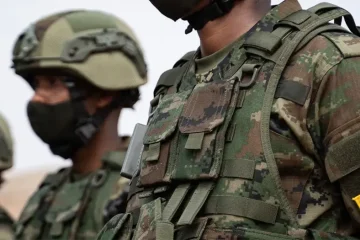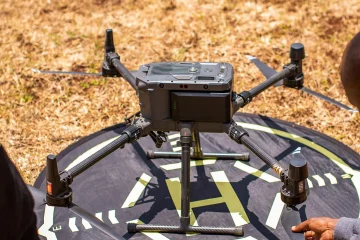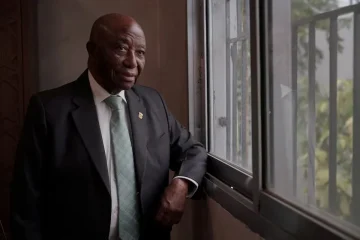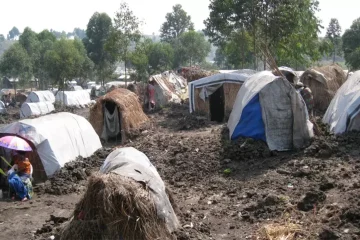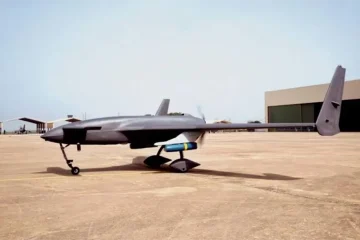PHILLISTA Waithera’s mother said she had begun a new life after the return of her daughter thanks to the novel use of technology. The 11-year-old was first reported missing in Nairobi in July 2021 when she was just nine years old.
At the time Waithera went missing, there were many other reported cases of missing children in the country. Based on media reports at the time, children aged between 0 to 13 years were the biggest victims.
“We have worked closely with the police and several organizations to track down our daughter. It took a lot of patience and perseverance,” Waithera’s mother, Ann said.
Waithera was reunited with her immediate family in July 2023 thanks to Face Age Progression (FAP) technology used by Kenyan non-profit, the Missing Child Kenya Foundation.
Ann Waithera provided photographs from when her daughter was 9 years old and these were run through an artificial intelligence (AI) app using FAP technology, which came up with a slightly older version of Phillista and was used to locate her.
“The traffickers managed to sneak me out of the country into Turkey. I was trafficked for sex work. But fortunately, the hotel owner allowed me to be with a cashier at the bar. There were many men buying sex from young girls who were held captive together. The hotel had rooms,” Phillista Waithera shared.
“I experienced four rape attempts but luckily it did not happen. But what is most traumatizing is that many of my fellow young girls ended up being killed and their bodies hidden by the criminals,” the 11-year-old said.
Ann Waithera still can’t believe how lucky she is to have her daughter safely home.
“I am happy to have my eldest child back into the family. She was reported missing in July 2021 and she was found the same month this year. It has been two years of sadness and tears. But my daughter is unharmed and healthy. She has been going through counselling to integrate her back into normal life. She will be going through many more sessions for some time to come,” Waithera shared.
But Phillista and Ann are only one example of a growing number of family reunions that have AI technology to thank.
“In a single calendar year during 2021, we located a record 298 children using AI. We hope we can reach the 2,000 figure someday,” said Maryanna Munyendo, CEO and founder of Missing Child Kenya Foundation.
According to figures from the United Nations, 19,000 children are trafficked from Kenya each year. Out of that total number, only 8.5% have been found. But of those found, technology plays a huge role.
“So far, we have successfully managed to reunite slightly less than 1,000 children since 2016. Faces are as important as fingerprints and hair follicles,” Munyendo said.
Munyendo works closely with law enforcement authorities to locate missing children. Both local and international police play a big role in tracking down missing children.
“We have also successfully utilized surveillance cameras in Nairobi through analysing data of movements of missing children. Through AI, data has been tracked to other countries. Some of these missing children have been missing for many years,” Munyendo added.
She noted that while most parents call the police and put a notification on social media or newspapers and alert neighbours, there are other important ways to track down missing loved ones.
“While this is good, it is important to seriously involve other people. AI is commonly used to locate missing children in real-time,” added Munyendo, who is also a child safety education consultant.
Munyendo said that while at least 25 of the trafficked people her organisation has tracked have been documented as deceased, techniques to prevent trafficking are improving.
“What is good is that artificial intelligence is also being used in predictive policing. This has prevented a lot of crimes from happening, including cases of attempted child trafficking. Many such cases have been prevented and led to immediate arrests. We have worked closely with law enforcement on this,” Munyendo said.
John Onyango, a police officer working with Kenya’s Department of Criminal Investigations (DCI), noted that historical data is important in crime prevention.
“Use of predictive policing while utilizing historical data is important. As police officers, we compare statistical data in specific geographical areas where we believe there is an increased chance of criminal activity. We use different machine models and algorithms. This action has prevented higher cases of child trafficking,” Onyango said.
According to Onyango, this form of AI, together with facial recognition has improved dramatically.
“These technologies keep improving by being upgraded every time. Also, we have identified the main perpetrators using AI technologies. There are some wanted criminals and some outside our borders,” he said.
Onyango said that figures of missing children change daily.
“Children are reported missing every day, so it is difficult to get the latest figures. Unfortunately, the number of children reported missing, only a small fraction are found. But I am happy to say that in the few found, artificial intelligence has played a big role. We see hope for the future,” said Onyango.
Missing Child Kenya has a figure of 109 children countrywide who have already been rescued and taken to government-owned children’s homes, during 2023. Munyendo noted that the figure could top 400 for 2023, an increase from the record 2021 figure of 298 children.
Phillista Waithera, one of the lucky ones, is happy to have her childhood back.
“I am in school and I play a lot with my friends. My favourite sport is athletics. I hope one day to compete in the Olympics. I love running the 200 meters. I did not expect to be back with my family. I’m surprised,” she said.






